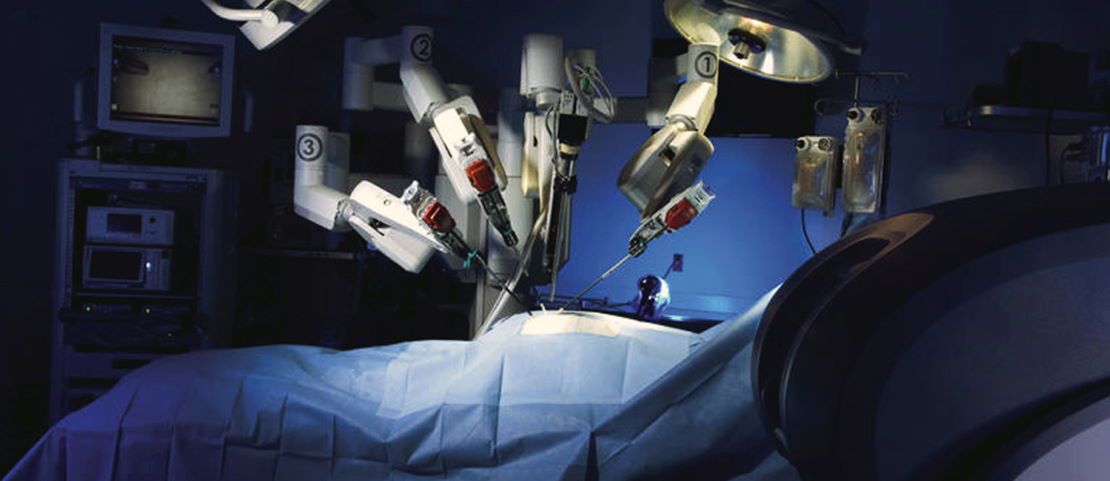

What are the Limitations of Surgical Robotics?
Let it be noted that I think robotics are the future, in surgery and everywhere else. We’re just clearly not at a point yet where everyone is totally comfortable with a robotic solution in the OR.
Utilisation
The first issue that many companies in the robotics space lament is getting buy in from surgeons and hospitals. This means actually convincing hospitals to use the technology in the first place. After all, if you have an incredibly well trained, highly paid surgeon on hand to do the work – why buy in an even more expensive robot?
That being said, adoption is increasing. Over a third of US hospitals now have at least one surgical robot, the majority of which are Intuitive Surgical’s Da Vinci (you can read more about some alternatives here).
Another reason for increased usage could be the younger generation’s willingness to use the technology. According to this article, more junior physicians are practicing with the Da Vinci in their spare time.
Lack of Clear Benefits & Data (For now)
Business (and therefore hospitals) make decisions based on data driven analysis and price (which we’ll come to next). Whilst robots have been in the OR for some time now, the amount of data compared to traditional approaches from randomised controlled trials (RCTs) pales in comparison.
This means it can be easier to justify the use of proven techniques in the OR with data intensive research, but this is changing. New studies, products and data are backing up the technology with hard facts all the time.
Observers are already recognising that the minimally invasive robotic procedures reduce the risk of infection and speed up recovery due to their ability to access hard-to-reach areas in the body that surgeons are unable to.
Price
Believe it or not, huge robots that are able to assist with or carry out complex medical procedures are expensive. Very expensive. Costs are offset by patients having to spend less time recovering from procedures, but the costs of acquiring, operating and maintaining the robot still make per-patient costs higher.
However, this cost would drop if robotic surgical solutions were more widely adopted. Also, as more competitors emerge and the market itself matures, up-front costs are sure to come down.
Wider adoption of the systems is likely to be motivated by younger surgeons and residents who are currently using the robots in their training.
Trust
We’ve been more than happy to embrace technological change and assistance in virtually every aspect of our life in the last decade. If we’re not googling obscure facts, we’re asking Alexa to book restaurants or order Ubers. Our trust in AI and robots to complete menial tasks is increasing but asking a robot to perform a hysterectomy or remove a gall bladder is still an alien concept for many.
There have also been reported issues with some surgical procedures. For example, device and instrument malfunctions such as burnt/ broken pieces of instrumentation or the need for a system reboot have, and do, happen. More info can be found in this report studying FDA data.
However, it’s important not to be blinded by this. Whilst it can be difficult to digest, human error also causes mistakes and costs lives in surgical procedures every day. At least we can run diagnostics on the machines and tweak them. It’s much harder to go back and see what went wrong if a surgeon makes an error.
I’m really proud to be working with companies who are right at the cutting edge of this. In any new technology teething problems are expected but, as I’ve hopefully outlined here, none of the above issues are insurmountable.
The consensus from my (admittedly bias) candidates and clients is that the future is bright, and that adoption is increasing. A brave new world of surgical technology is out there and it might become widespread sooner than you think.
Recommended.

Why is AI a Game-Changer for Minimally Invasive Surgery?
Recently, I hosted my first CM Conversations episode on LinkedIn Live. For it, I was joined by an industry expert, Todd Usen, who is the CEO at Activ Surgical. We discussed all things AI and minimally invasive surgery.
.jpg)
"Mental illness is becoming mainstream and there's no magic pill to treat it"
I spoke with CEO and serial entrepreneur Janne Huhtala who has a track record of working with start-ups in neuromodulation. This technology has the potential to change millions of people's lives.
.jpg)
Re-Inventing Eyecare with GlobeChek.
We caught up with GlobeChek’s CEO William Mallon to understand the effect that the pandemic has had on his start-up and the entire ophthalmic industry.

Revolutionising Ultrasound with ENDRA Life Sciences
In this episode it was all about imaging, as we caught up with Renaud Maloberti, Chief Commercial Officer for ENDRA Life Sciences.
Comments.